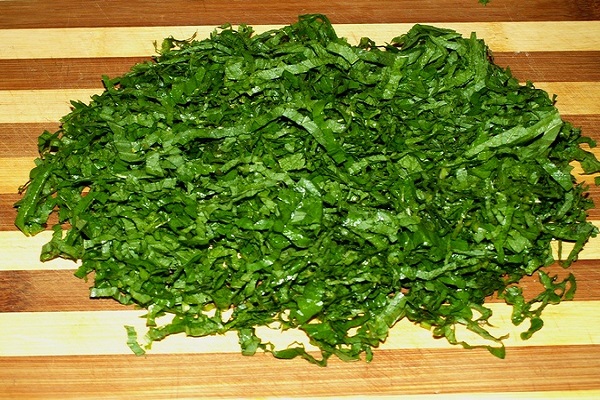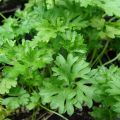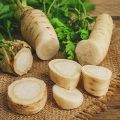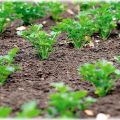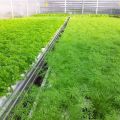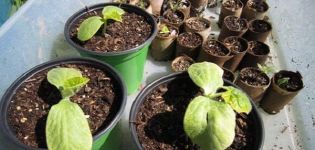Growing and caring for parsley in the open field, how and how much it grows
Parsley as a spicy plant has been known for a long time in countries with warm climates. But in the corners of the world, where summers are cooler with early frosts, the vegetable came not so long ago. The plant has gained popularity for the peculiar taste and aroma of both green petioles and root crops. To grow parsley outdoors, you do not need to have special agrotechnical knowledge. It is necessary to create a number of conditions for the spicy culture to produce healthy greens all summer.
Types and varieties of parsley
Of the types of vegetable plants, biennial and annual herbs are found, characterized by:
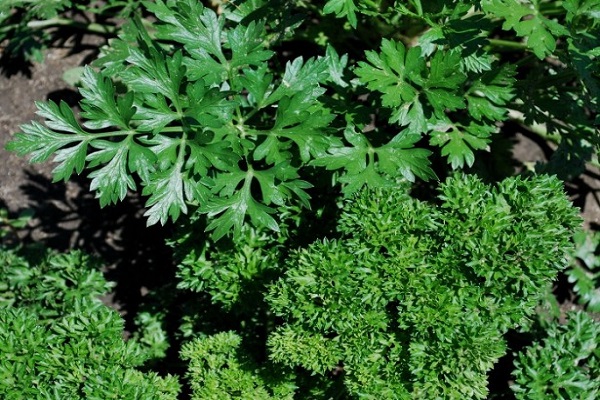
- erect stems;
- feathery green leaves of a dark and light tone;
- root system in the form of a cone-shaped rod;
- whitish or greenish heart-shaped flowers;
- small oval seeds.
Parsley is distinguished by its high resistance to low temperatures, as well as moisture-loving.
Distinguish between root parsley, which in the first year of the growing season produces a cream or white fruit that looks like a carrot. Use parsley roots for food as a spice, as well as for medicinal purposes. Of the popular varieties of this type of vegetable, Berlinia, Eagle, Berlin root, Sugar root are noted.
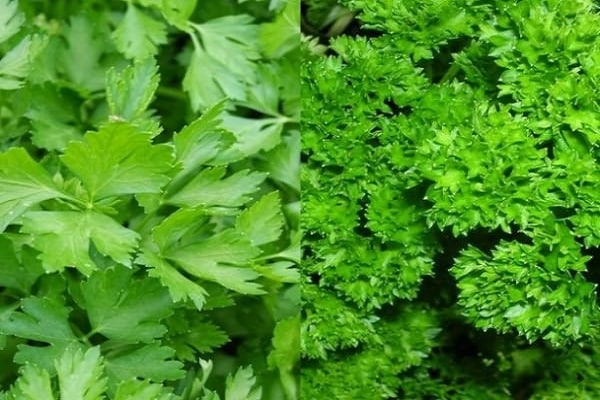
Many people choose to grow vegetables for greens. Get green petioles with fragrant leaves during the first year of plant life. They are ready for cutting after 40-60 days after germination. Without juicy spicy herbs, one cannot imagine salads, main dishes, soups. Many gardeners sow parsley every 2 weeks, supplying themselves with useful grass for the entire summer and winter.
Of the varieties of leaf parsley, the following are valued:
- strong bush Festivalnaya;
- early maturing Yielding;
- high-yielding green crystal;
- disease-resistant Natalka.
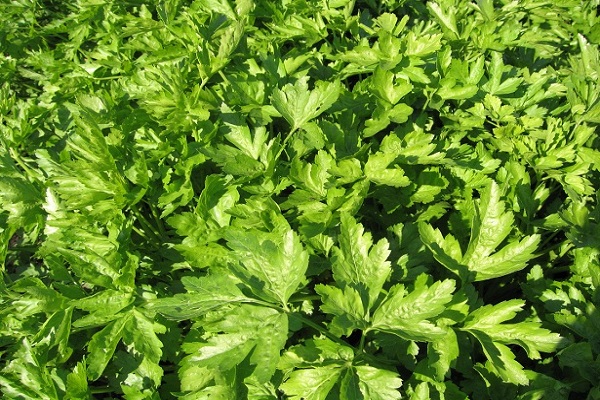
As decorative, curly parsley is used, in which the rosette is dense with leaves that are folded in corrugation, with wavy edges. The varieties of curly plants were bred: Bogatyr, Esmeralda. Among the "foreigners" are the Mooskrause parsley, Rialto, Italian giant, Titan.
Parsley: combination with other plants
Among the secrets of vegetable growing, one can single out a competent crop rotation at their summer cottage. For every vegetable, there are better predecessors and bad neighbors that the culture has a hard time getting along with. When this is not thought about and the plants are planted as they please, a rich harvest of vegetables is difficult to obtain.
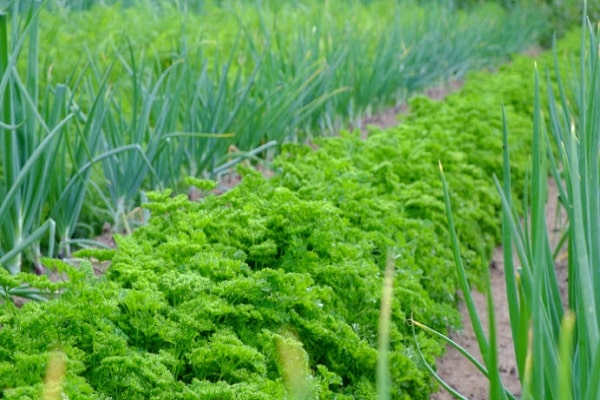
For parsley, as a representative of the Umbrella family, you need a plot where previously there were beds with onions, tomatoes, zucchini, squash. Spicy grass feels good in place of cabbage, cucumbers.
The herbaceous plant is often planted together with dill, cilantro, or carrots. The beds with grass are located next to the plantings of tomatoes, legumes.
An excellent protection for strawberries, strawberries from pests will be beds with fragrant herbs.
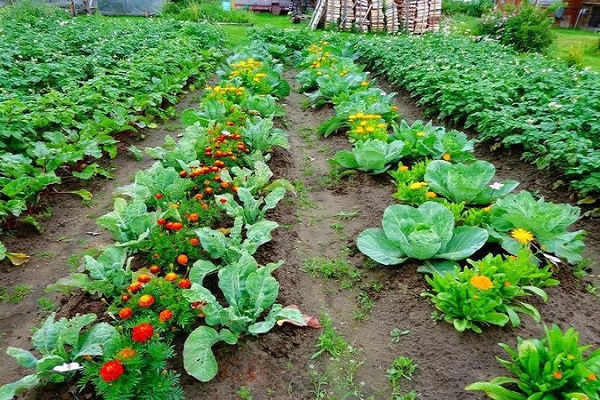
When to plant parsley
Depending on the region of cultivation of a spicy crop, it can be grown by seedlings or directly by seeds to the garden.
In the first method, boxes with a nutrient mixture are prepared. Then the grass seeds are placed in the moist soil close to each other. The optimal timing for planting seedlings is the period 1 month before transplanting into open ground. If you prefer reproduction by roots, then planting is carried out later. For this method, root vegetables weighing 50-60 grams with a length of less than 15 centimeters are used. The length can be shortened by cutting off the bottom with a blade and sprinkling with wood ash.

For sowing directly into the ground, they choose the time when the snow has melted. Since the seeds are not afraid of low temperatures, then at the end of April - until May 10, you can plant a vegetable. If the planting material is prepared correctly, then the seedlings will appear on the 20th day.
Until the end of July, parsley is sown every 2 weeks in order to be constantly with fresh herbs.
In winter, planting of seeds occurs as the onset of cold weather. At a daytime temperature of 2-5 degrees Celsius and with light frosts at night, dry seeds are already put in the grooves, sprinkled with soil on top. It is necessary to protect them from germination so that the spice does not die. To do this, cover the bed with mulch, and on top with a film. The main thing in pre-winter sowing is that the weather becomes colder and snow falls faster, which will save the seeds from freezing and death.
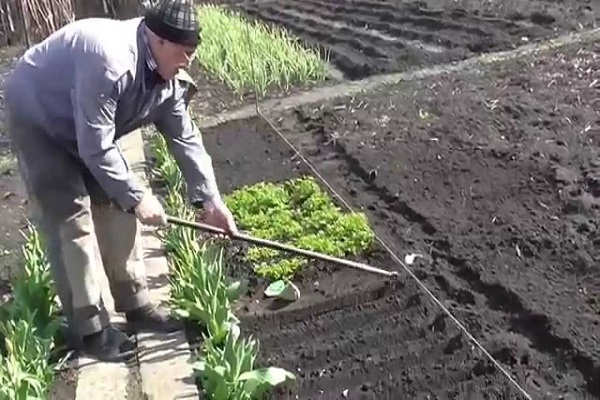
Seedling preparation
If you want to get parsley leaves already in the middle of spring, you need to adopt a seedling cultivation method:
- The boxes are prepared in advance with a depth of 20-30 centimeters. After disinfecting the container, fill it with nutrient soil. It's good when there is a drainage layer at the bottom, which will allow moisture not to stagnate in the container.
- The soil is needed from two parts of garden land and one part of peat and humus.
- It is better to immediately feed the soil mixture with mineral fertilizers containing phosphorus and potassium.
- Leafy varieties are chosen with an early ripening period.
- Before placing the seeds in the ground, they are disinfected for 20 minutes in a solution of potassium permanganate.
- Seeds are embedded in the holes to a depth of 1.5-2 centimeters.
- After planting, the soil is watered abundantly with water at room temperature.
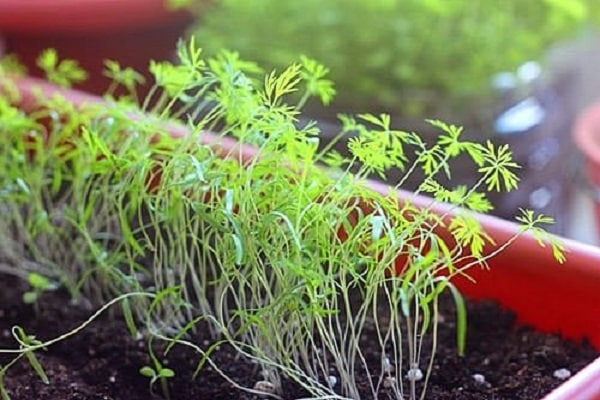
In order for seedlings to appear on time, they need fresh air, regular watering. The air temperature should not exceed 20 degrees, not lower than 17.
At the level of two leaves, the seedlings are thinned out, leaving a distance of 1-2 centimeters between them. Two weeks before transplanting, parsley seedlings begin to harden it, taking it out into the open air.
You can grow vegetable seedlings in containers on a windowsill or in a greenhouse.
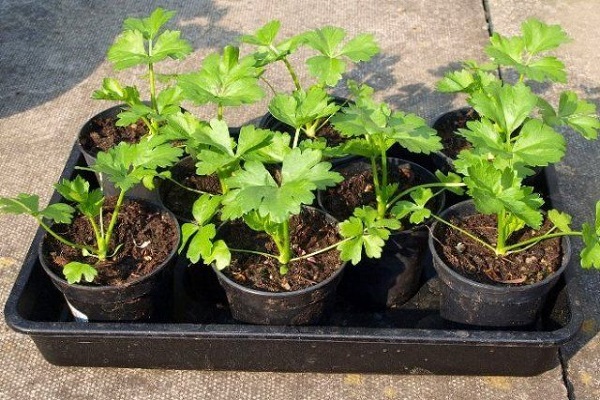
Features of planting parsley in open ground
More often, open ground is chosen for growing spicy herbs, so as not to bother yourself with caring for seedlings.
In a lit place, the soil is prepared in advance. In the fall, rotted manure or compost is introduced into it 4-5 kilograms per square meter of the garden. It is necessary to think about mineral fertilizers if a vegetable is planted in the winter.
Seed preparation includes soaking in:
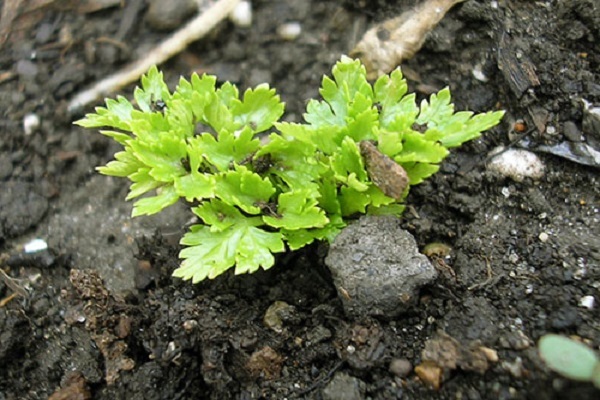
- warm water for a day;
- growth stimulant;
- vodka solution for 20 minutes;
- infusion of wood ash for 5 hours.
Choose one of the methods that will allow the seeds to germinate faster in the ground. To force germination, a little quicklime is introduced into the grooves. But even simply dipped in water, seeds in moist soil will germinate rapidly.
When planting in autumn, the planting material must be dry, otherwise its rapid germination will lead to the death of seedlings from frost.
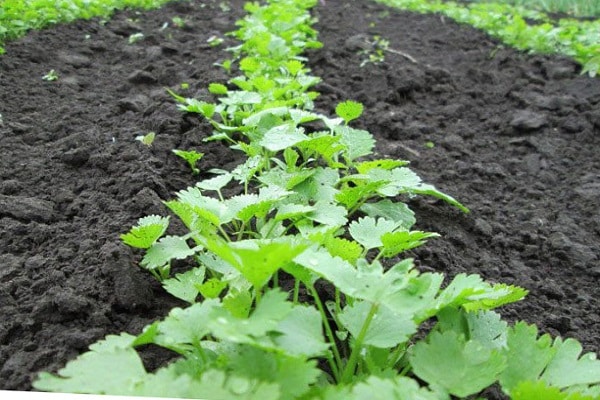
Parsley seeds are planted along with a small percentage of lettuce seeds. The latter sprout faster, and they determine the direction of seedlings. It is better to loosen the soil, helping the seeds to break through the crust.
The parsley planting depth is 2 centimeters. It is better to plant parsley in the country with two-line ribbons with a distance of 40-50 centimeters between them.
Seedlings of a vegetable plant will appear in 15-20 days.
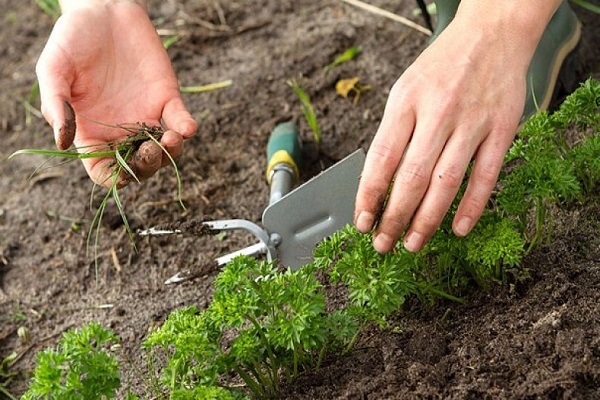
Many people propagate the vegetable by roots. The prepared product, cut to 8-10 centimeters and disinfected, is buried inside the soil, leaving a stump 2 centimeters above the ground. Greens will begin to form in 2 weeks. All that remains is to take proper care of her.
How to properly care
The spicy root vegetable is unpretentious, it is easy to care for it. But the agricultural technology of a fragrant culture cannot be imagined without:

- regular watering;
- fertilization;
- thinning;
- loosening and weeding the beds;
- obligatory pruning of petioles with green leaves.
The emergence of seedlings in the garden is a signal for inter-row cultivation of plantings with a hoe or cultivator to a depth of 5-6 centimeters. The procedure is done 3-4 times over the summer.
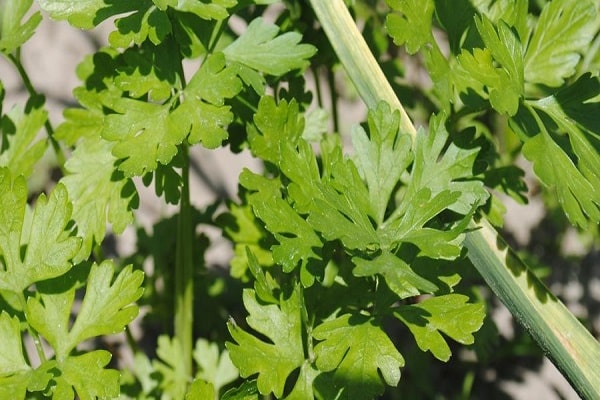
Weeds are fought manually between shoots.
The first thinning at the level of 2 leaves is carried out, leaving a distance of 2 centimeters, after a month - 5 centimeters. Those shoots that have been pulled out are used as intended for food or for canning.

Watering parsley
Spicy grass needs watering to keep the leaves and petioles juicy. With a lack of moisture, the foliage will begin to turn yellow, and the leafy rosettes will taste tough and lose their unique aroma.
Water the vegetable garden every 2-4 weeks, depending on weather conditions. Plants should not be excessively moisturized. They wither, stop growing.
For humidification, use water at room temperature, settled.

Feeding parsley
During the growing season, the vegetable needs feeding in the form of organic and mineral complexes. If manure was applied to the site before planting, then after the first thinning of the plants, a complex of ammonium nitrate (15 grams), potassium salts (10 grams) and superphosphate (20 grams) is added. All components are dissolved in 10 liters of water.
The second time, 2-3 weeks after the first procedure, the amount of nutrients is increased by 1.5 times.
It is necessary to fertilize a bed with grass along with moistening the soil. So useful elements are better absorbed, accelerating the vegetation of the vegetable.

Pruning parsley
Leafy plant varieties are pruned regularly to keep the greenery growing constantly. For the procedure, shoots 10 centimeters high are chosen. It is better to start cutting from the outside of the bush. Don't just pinch off the tops. Shoots are cut to the ground. In this case, restoration of the bush will go faster.
Pruning at the end of summer is done to prepare greens for storage for the winter. Later, twigs and leaves will begin to lose their juiciness and beneficial properties.
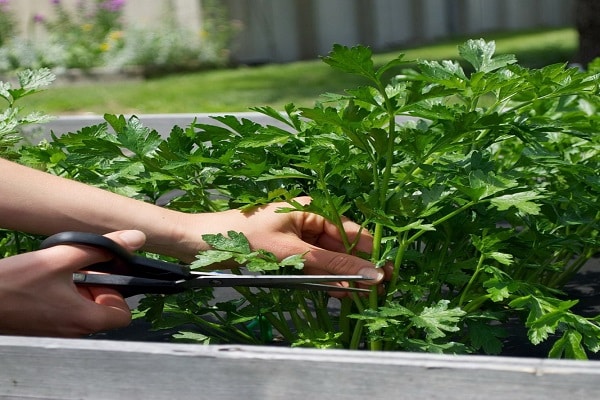
Protection against diseases and pests
Of the fungal diseases, the plant most often encounters:
- powdery mildew;
- stolbur;
- alternaria, or black rot;
- white spot, or septoria;
- rust.
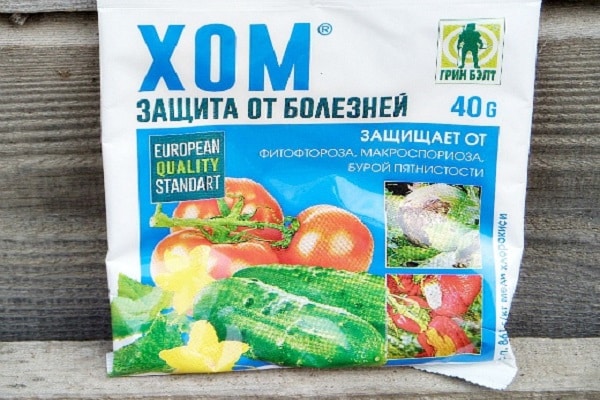
Pathologies appear as a result of improper care. You can determine the infection by the spots on the leaves, their drying.
To get rid of the lesion, special preparations are used: "Hom", "Barrier". For prevention, they fight plant residues, destroying them.
Of the pests, the larvae of the swallowtail butterfly, fleas, wood lice, destroying the greenery of the plant, are dangerous. Insecticides will save you from parasites. They are processed 2-3 times with an interval of 10 days.

Harvesting and storage
Parsley is harvested depending on how much it grows.There are varieties that are enough for technical maturity 55-60 days, others - 100 days is not enough. The greens are cut during the entire growing season of the plant. It is frozen or dried to be added to food in winter. The yield from 1 square meter ranges from 2 to 5 kilograms.
The harvesting of vegetable roots in autumn ends no later than September 25. The fruits are peeled from the ground, given time to dry. Then they are placed in basements or cellars with good ventilation and an air temperature within 0 degrees. Root crops will be better preserved in wet sand.
Chopped or chopped roots are dried under a canopy and placed in glass jars. Chopped fruits are also frozen, using as a seasoning for dishes.
